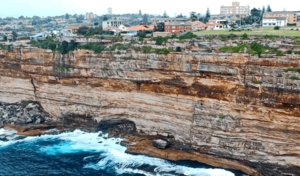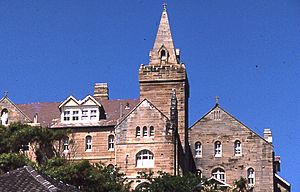Vaucluse, New South Wales facts for kids
Quick facts for kids VaucluseSydney, New South Wales |
|||||||||||||||
|---|---|---|---|---|---|---|---|---|---|---|---|---|---|---|---|
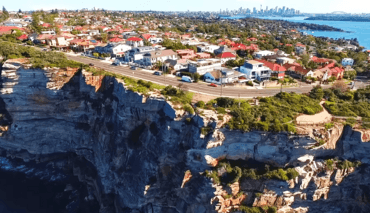
Clifftop neighborhoods in the East of the suburb
|
|||||||||||||||
| Elevation | 76 m (249 ft) | ||||||||||||||
| Location | 9 km (6 mi) east of Sydney CBD | ||||||||||||||
| LGA(s) |
|
||||||||||||||
| State electorate(s) | Vaucluse | ||||||||||||||
| Federal Division(s) | Wentworth | ||||||||||||||
|
|||||||||||||||
Vaucluse is a beautiful suburb located in the eastern part of Sydney, New South Wales, Australia. It's about 8 kilometers (5 miles) east of the main city center. Vaucluse is special because it sits on a peninsula, with Sydney Harbour on its west side and the Tasman Sea (part of the Pacific Ocean) to its east.
From the harbour side of Vaucluse, you can see amazing views across the water, including the famous Sydney Harbour Bridge. Its neighbors are Watsons Bay to the north and Rose Bay and Dover Heights to the south. Vaucluse is mostly a place where people live. It's known for having some of the most expensive homes and properties in Sydney.
Most of the very valuable homes in Vaucluse are found closer to the harbour, on the western side of New South Head Road. Less expensive homes are usually located further east, near the South Head General Cemetery.
Contents
History of Vaucluse
Before Europeans arrived, the land where Vaucluse now stands was home to the Birrabirragal Aboriginal clan. They were part of the coastal Dharug language group.
Early European Settlement
Soon after European settlement in Sydney, a simple signal station was set up here. Its job was to alert the colony when a ship was coming. Pilots from Camp Cove in Watsons Bay would then guide the ships into the harbour. A proper signal station was built in 1790. A path to it later became Old South Head Road in 1811.
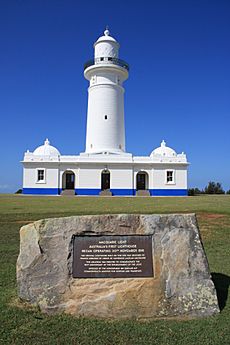
The Macquarie Lighthouse was built on a ridge nearby in 1816. It was designed by Francis Greenway, who was an important architect in the early colony. People also started building homes in the area around this time.
Vaucluse House and Its Name
The original Vaucluse House, which gave the suburb its name, was built by Sir Henry Browne Hayes. He had been sent to New South Wales in 1802. He was allowed to buy land here.
Later, in 1822, Captain John Piper bought the house. Sir Henry Browne Hayes admired a poet named Petrarch, who wrote about a famous spring called Fontaine de Vaucluse in France. This is how the house, and later the suburb, got its name.
In 1827, William Charles Wentworth (1790–1872) bought the house. He was a lawyer, explorer, and one of the first Europeans to cross the Blue Mountains in 1813. He made many changes and additions to the house. Today, Vaucluse House has fifteen bedrooms and is built in the Gothic style from the 1830s. It sits on 27 acres (11 hectares) of gardens and is a protected heritage site.
More Historic Buildings
In the early 1840s, the current signal station was built by the Colonial Architect, Mortimer Lewis. It is still used today to control ships entering and leaving the harbour.
Later that decade, more homes were built. Greycliffe House was constructed at Shark Beach by a relative of William Charles Wentworth. It was a large sandstone house. After a fire in the 1890s, it was restored. Now, it serves as the visitor center for the Sydney Harbour National Park.
Another important home, Carrara, was built between 1854 and 1856. It was designed for John Hosking, Sydney's first Lord Mayor. The house had great views of the harbour. In 1915, its name was changed to Strickland House, and it became a recovery home for women.
By 1871, people in the colony were worried about a possible attack from Russia. Because of this, forts were built at Steel Point, near Carrara. These forts had cannon positions and storage rooms. They were made from sandstone found at the site and are still standing today.
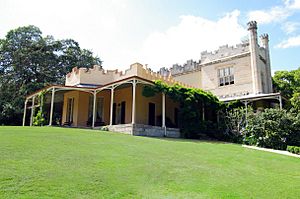
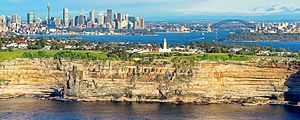
Around the same time, a tomb was designed for the Wentworth family. William Charles Wentworth died in England in 1872. His remains were placed in the beautiful Gothic mausoleum built in Chapel Road, Vaucluse.
A little later, Edward Mason Hunt designed a large Victorian Gothic mansion called The Hermitage. It was damaged by fire in 1936 but was restored.
St Michael's Church of England was built in 1877. It was designed by Edmund Blacket. The sandstone church was made larger in the 1930s with a new spire. This new design even won an architecture award in 1942.
By the 1880s, the original Macquarie Lighthouse needed repairs. In 1883, the Colonial Architect, James Barnet, built a new lighthouse. It was almost an exact copy of the first one, which was then taken down. Other old buildings near the lighthouse are also still there.
Former Military Sites
Several old forts and defensive spots are located along the shores and cliffs of Vaucluse.
The Signal Hill Battery was built in 1892. It was meant to protect Sydney from enemy ships firing from the coast. Even though it has been damaged over time, it is still mostly complete and is next to the Signal Hill signal station.
The Steel Point fortification in Nielsen Park was built in 1871. It had large guns to defend against attacks. This fort was built when people were worried about a Russian attack and when British troops were leaving. The fort had three sandstone gun positions connected by underground passages to storage rooms for gunpowder.
In the 1950s, the RAN built a degaussing station over part of the Steel Point fort. A degaussing station helps to demagnetize naval ships. This was a way to protect them from magnetic mines, especially during World War II. Ships would pass over special cables under the harbour to become demagnetized.
Heritage Listings
Vaucluse has several places that are protected for their historical importance:
- 793 Old South Head Road: South Head General Cemetery
- 32b Fitzwilliam Road: Wentworth Memorial Church
- Chapel Road: Wentworth Mausoleum
- Greycliffe Avenue: Nielsen Park
- Old South Head Road: Macquarie Lighthouse
- 52 Vaucluse Road: Strickland House, Vaucluse
- 69a Wentworth Road: Vaucluse House
People of Vaucluse
In 2021, about 9,510 people lived in Vaucluse. Most people (58.7%) were born in Australia. Other common birthplaces included South Africa (8.0%) and England (5.2%).
Most people (75.9%) spoke only English at home. Other languages spoken included Mandarin, Greek, and Hebrew. Many different religions are practiced, with "No Religion" being the most common, followed by Judaism and Catholicism.
The average income in Vaucluse is higher than the national average. Most homes are separate houses (48.4%) or flats or apartments (40.4%).
Landmarks in Vaucluse
The Macquarie Lighthouse stands tall on the eastern side of the suburb. Vaucluse House is a historic home with great views of Sydney Harbour. It is managed by the Historic Houses Trust.
South Head Cemetery
South Head General Cemetery is located where New South Head Road and Old South Head Road meet. It is managed by Waverley Council.
The cemetery was started in 1868 for the growing population of Vaucluse. It covers about 4 acres (1.6 hectares) and holds the graves of over 6,000 people. Many well-known Australians are buried here, including Australia's first Prime Minister, Sir Edmund Barton.
The cemetery also contains the graves of 22 people who died in the 1927 Greycliffe ferry accident.
Notable Residents
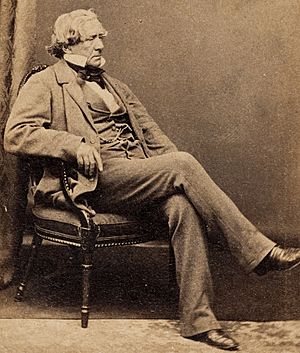
Many interesting people have lived in Vaucluse, including:
- Henry Browne Hayes (1762–1832), an Irish-born person who owned Vaucluse House.
- William Charles Wentworth (1790–1872), a statesman, explorer, and owner of Vaucluse House.
- Janette Howard (born 1944), the wife of former Prime Minister John Howard.
- Natalie Portman (born 1981), a famous actor.
- Rod Sims (born 1950), a former head of the Australian Competition & Consumer Commission (ACCC).
- Steven Solomon (born 1993), an Olympic sprinter.
- David Horwitz (born 1994), a former Rugby Union player.
Images for kids
-
Sir John Robertson grave, designed by John Horbury Hunt


